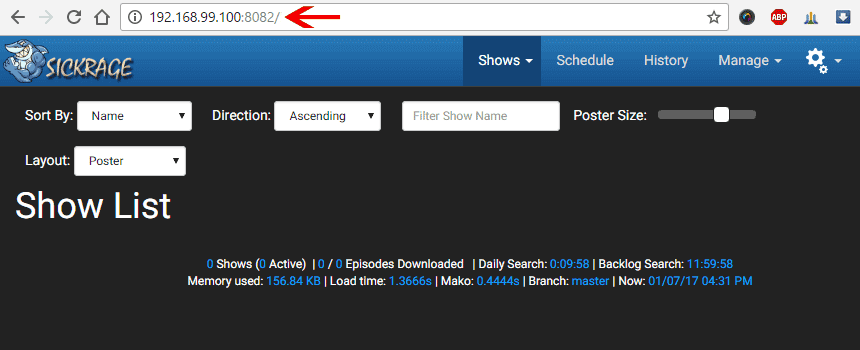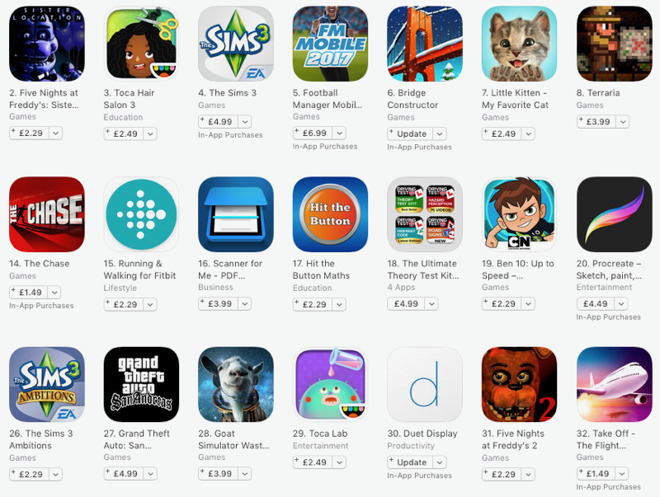Browser Gui In Docker For Mac

Legacy desktop solution. Docker Toolbox is for older Mac and Windows systems that do not meet the requirements of Docker Desktop for Mac and Docker Desktop for Windows. We recommend updating to the newer applications, if possible.
Estimated reading time: 9 minutesApr 16, 2019 Docker + Selenium Grid: Is it possible to do true cross-platform testing? Does that mean it serves only to verify Chrome and Firefox on linux. Is there some way to use Docker to verify these other browser + OS combos? Selenium docker selenium-grid. But try putting your question for mac in docker-for-selenium project they will help. At this time, no, Docker for Windows Server 2016 does not support GUI-based applications. This is because Windows containers are based on either Nano or Core Server, which do not allow users to start up a GUI-based interface nor RDP into the container.
Docker Toolbox provides a way to use Docker on older Macsthat do not meetminimal system requirements for Docker Desktop for Mac.
What you get and how it works
Docker Toolbox includes the following Docker tools:
- Docker CLI client for running Docker Engine to create images and containers
- Docker Machine so you can run Docker Engine commands from macOS terminals
- Docker Compose for running the
docker-composecommand - Kitematic, the Docker GUI
- the Docker QuickStart shell preconfigured for a Docker command-line environment
- Oracle VM VirtualBox
Because the Docker Engine daemon uses Linux-specifickernel features, you can’t run Docker Engine natively onmacOS with Docker Toolbox. Instead, you must use theDocker Machine command, docker-machine, to create andattach to a small Linux VM on your machine. This VM hostsDocker Engine for you on your Mac.
Tip: One of the advantages of the newerDocker Desktop for Mac solution is thatit uses native virtualization and does not requireVirtualBox to run Docker.
Step 1: Check your version
Your Mac must be running macOS 10.8 “Mountain Lion” or newer to run Dockersoftware. To find out what version of the OS you have:
Choose About this Mac from the Apple menu.
The version number appears directly below the words
macOS.If you have the correct version, go to the next step.
If you aren’t using a supported version, you could consider upgrading your operating system.
If you have macOS 10.10.3 Yosemite or newer, consider using Docker Desktop for Mac instead. It runs natively on the Mac, so there is no need for a pre-configured Docker QuickStart shell. It uses the native macOS Hypervisor framework for virtualization, instead of Oracle VirutalBox. Full install prerequisites are provided in the Docker Desktop for Mac topic in Docker Desktop for Mac.
Step 2: Install Docker Toolbox
Note: Docker are no longer maintaining the download.docker.com url forDocker Toolbox, therefore an unsigned warning (verified publisher dialog) isdisplayed during the installation process.
To download the latest version of Docker Toolbox, go to ToolboxReleases and download thelatest
.pkgfile.Install Docker Toolbox by double-clicking the package or by right-clickingand choosing “Open” from the pop-up menu.
The installer launches an introductory dialog, followed by an overview of what’s installed.
Press Continue to install the toolbox.
The installer presents you with options to customize the standard installation.
By default, the standard Docker Toolbox installation:
- installs binaries for the Docker tools in
/usr/local/bin - makes these binaries available to all users
- updates any existing Virtual Box installation
For now, don’t change any of the defaults.
- installs binaries for the Docker tools in
Press Install to perform the standard installation.
The system prompts you for your password.
Provide your password to continue with the installation.
When it completes, the installer provides you with some shortcuts. You can ignore this for now and click Continue.
Then click Close to finish the installer.
Step 3: Verify your installation
To run a Docker container, you:
- create a new (or start an existing) Docker Engine host running
- switch your environment to your new VM
- use the
dockerclient to create, load, and manage containers
Once you create a machine, you can reuse it as often as you like. Like anyVirtual Box VM, it maintains its configuration between uses.
Open the Launchpad and locate the Docker Quickstart Terminal icon.
Click the icon to launch a Docker Quickstart Terminal window.
The terminal does a number of things to set up Docker Quickstart Terminal for you.
Click your mouse in the terminal window to make it active.
If you aren’t familiar with a terminal window, here are some quick tips.
The prompt is traditionally a
$dollar sign. You type commands into thecommand line which is the area after the prompt. Your cursor is indicatedby a highlighted area or athat appears in the command line. Aftertyping a command, always press RETURN.Type the
docker run hello-worldcommand and press RETURN.The command does some work for you, if everything runs well, the command’s output looks like this:
Optional: Add shared directories
By default, Toolbox only has access to the /Users directory and mounts it intothe VMs at /Users. If your project lives elsewhere or needs access to otherdirectories on the host filesystem, you can add them.
Use the VirtualBox GUI
You can configure shared folders in the VirtualBox UI.
Open the VirtualBox UI.
Click the Settings gear, then go to Shared Folders.
Select any existing listing under Machine Folders, thenclick the + icon.
– Jefferson scored 10 runs over the last two innings against the Mineral Area bullpen, and stopped Mineral Area short of reaching the Region 16 championship round.
 How to Change Your Mac’s Language and Region Settings Matt Klein @howtogeek July 8, 2016, 12:34pm EDT If you want to use your Mac in a different language, or you’re live in a different region, then you can change it in OS X. How to Change the Region on a Mac. 10 second summary: 1. Click on the Apple menu 2. Click on the 5. Hover over your Region. Select your country. Click on the Apple menu. Story Links DALLAS, Pa. (Baseball) - The Misericordia University baseball season came to a heartbreaking end as the Cougars fell to Washington & Jefferson, 5-4, in the NCAA Division III South Super Regional, Saturday at Tambur Field. The Cougars fell behind early as the Presidents scored three runs in the top of the first inning, but MU battled back and had the potential tying run on base in.
How to Change Your Mac’s Language and Region Settings Matt Klein @howtogeek July 8, 2016, 12:34pm EDT If you want to use your Mac in a different language, or you’re live in a different region, then you can change it in OS X. How to Change the Region on a Mac. 10 second summary: 1. Click on the Apple menu 2. Click on the 5. Hover over your Region. Select your country. Click on the Apple menu. Story Links DALLAS, Pa. (Baseball) - The Misericordia University baseball season came to a heartbreaking end as the Cougars fell to Washington & Jefferson, 5-4, in the NCAA Division III South Super Regional, Saturday at Tambur Field. The Cougars fell behind early as the Presidents scored three runs in the top of the first inning, but MU battled back and had the potential tying run on base in.Choose the Folder Path on the host, enter the Folder Namefor within the VM (or take the default, which is the same nameas on the host), and configure any additional options you need.
Choose Auto-mount if you want the folder to automaticallybe mounted into the VM, and choose Make Permanent for itto be considered a permanently shared folder.
Click OK to add the new folder to the Shared Folders list.
Click OK again to save your changes and exit the Settings dialog.
Use the command line
You can configure shared folders using a command like the following:
This command mounts /some/mount/location into the VM at /your-other-share-hame,owned by UID 1000 and GID 50.
Note: The autommount and permanent mount options are not supported usingthe command line.
How to uninstall Toolbox
Removing Toolbox involves removing all the Docker components it includes.
A full uninstall also includes removing the local and remote machinesyou created with Docker Machine. In some cases, you might want to keepmachines created with Docker Machine.
Best p2p file-sharing programs for mac. LimeWire is easy to use, ultra-fast and scores high on the features list. LimeWire provides a setup wizard which can be used to. It makes file sharing easy and smooth, with a large community backing it up.
For example, if you plan to re-install Docker Machine as a part ofDocker Desktop for Mac you can continue to manage those machines throughDocker. Or, if you have remote machines on a cloud provider and youplan to manage them using the provider, you wouldn’t want to removethem. So the step to remove machines is described here as optional.
To uninstall Toolbox on a Mac, do the following:
List your machines.
Optionally, remove each machine. For example:
This step is optional because if you planto re-install Docker Machine as a partof Docker Desktop for Mac, you can import andcontinue to manage those machines through Docker.
In your “Applications” folder, remove the “Docker” directory,which contains “Docker Quickstart Terminal” and “Kitematic”.
Run the following in a command shell to fully remove Kitematic:
Remove the
docker,docker-compose, anddocker-machinecommands fromthe/usr/local/binfolder. Docker Desktop for Mac and Brew may also haveinstalled them; in case of doubt leave them, or reinstall them via Brew, orrerun Docker Desktop for Mac (no need to reinstall it).Optionally, remove the
~/.docker/machinedirectory.This directory stores some configuration and/or state, such as informationabout created machines and certificates.
Uninstall Oracle VirtualBox, which is installed as a part of theToolbox install.
Next steps
Try the Get started tutorial.
Dig in deeper with more tutorials and examples on building images, running containers, networking, managing data, and storing images on Docker Hub.
Key Features and Capabilities
The fastest way to design and deliver containerized applications and microservices on the desktop and cloud.
Simple Setup for Docker and Kubernetes
No need to fiddle with VMs or add a bunch of extra components; simply install from a single package and have your first containers running in minutes. You get certified Kubernetes and Docker, for developers of all levels of container expertise.
Certified Kubernetes
Setup a fully functional Kubernetes environment on your desktop with a single click and start developing and testing modern applications in minutes.
Application Templates and App Designer
Customize and share multi-service applications and service templates that are tailored to your organization. Pre-defined and customizable application templates adhere to corporate standards and automate configuration, eliminating error-prone manual setup. Intuitive Application Designer facilitates the packaging, installing, and managing of multi-service applications as a shareable package.